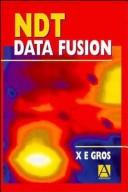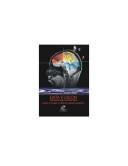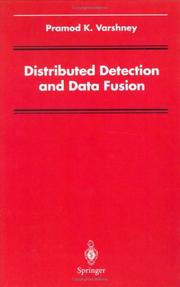| Listing 1 - 10 of 22 | << page >> |
Sort by
|
Book
ISBN: 1000128137 373151074X Year: 2021 Publisher: Karlsruhe KIT Scientific Publishing
Abstract | Keywords | Export | Availability | Bookmark
 Loading...
Loading...Choose an application
- Reference Manager
- EndNote
- RefWorks (Direct export to RefWorks)
In this work, probabilistic methods for combining multiple sensors utilizing multi-sensor fusion for robust and precise localization and mapping in heterogeneous outdoor environments are presented. Aspects of increasing the reliability of landmark recognition are highlighted, as well as the integration of additional absolute and relative sensors using advanced filtering techniques.
Maths for computer scientists --- Mobile Robotersysteme --- Multi-Sensor-Fusion --- Lokalisierung --- Kartierung --- SLAM --- Mobile robotic systems --- multi-sensor fusion --- localization --- mapping
Book
ISBN: 9535158392 3902613521 Year: 2009 Publisher: IntechOpen
Abstract | Keywords | Export | Availability | Bookmark
 Loading...
Loading...Choose an application
- Reference Manager
- EndNote
- RefWorks (Direct export to RefWorks)
Data fusion is a research area that is growing rapidly due to the fact that it provides means for combining pieces of information coming from different sources/sensors, resulting in ameliorated overall system performance (improved decision making, increased detection capabilities, diminished number of false alarms, improved reliability in various situations at hand) with respect to separate sensors/sources. Different data fusion methods have been developed in order to optimize the overall system output in a variety of applications for which data fusion might be useful: security (humanitarian, military), medical diagnosis, environmental monitoring, remote sensing, robotics, etc.
Detectors. --- Multisensor data fusion. --- Data fusion --- Multi-sensor fusion --- Sensor fusion --- Signal processing --- Sensor networks --- Sensors --- Engineering instruments --- Physical instruments --- Computer networking & communications
Book
ISBN: 9811601070 9789811601071 9811601062 Year: 2021 Publisher: Singapore Springer Nature Singapore :Imprint: Springer
Abstract | Keywords | Export | Availability | Bookmark
 Loading...
Loading...Choose an application
- Reference Manager
- EndNote
- RefWorks (Direct export to RefWorks)
Sensor networks. --- Multisensor data fusion. --- Data fusion --- Multi-sensor fusion --- Sensor fusion --- Signal processing --- Sensor networks --- Networks, Sensor --- Detectors --- Context-aware computing --- Multisensor data fusion
Book
ISBN: 3030104613 3030104591 Year: 2019 Publisher: Cham : Springer International Publishing : Imprint: Springer,
Abstract | Keywords | Export | Availability | Bookmark
 Loading...
Loading...Choose an application
- Reference Manager
- EndNote
- RefWorks (Direct export to RefWorks)
Auditory behavior, perception, and cognition are all shaped by information from other sensory systems. This volume examines this multi-sensory view of auditory function at levels of analysis ranging from the single neuron to neuroimaging in human clinical populations. Visual Influence on Auditory Perception Adrian K.C. Lee and Mark T. Wallace Cue Combination within a Bayesian Framework David Alais and David Burr Toward a Model of Auditory-Visual Speech Intelligibility Ken W. Grant and Joshua G. W. Bernstein An Object-based Interpretation of Audiovisual Processing Adrian K.C. Lee, Ross K. Maddox, and Jennifer K. Bizley Hearing in a “Moving” Visual World: Coordinate Transformations Along the Auditory Pathway Shawn M. Willett, Jennifer M. Groh, Ross K. Maddox Multisensory Processing in the Auditory Cortex Andrew J. King, Amy Hammond-Kenny, Fernando R. Nodal Audiovisual Integration in the Primate Prefrontal Cortex Bethany Plakke and Lizabeth M. Romanski Using Multisensory Integration to Understand Human Auditory Cortex Michael S. Beauchamp Combining Voice and Face Content in the Primate Temporal Lobe Catherine Perrodin and Christopher I. Petkov Neural Network Dynamics and Audiovisual Integration Julian Keil and Daniel Senkowski Cross-Modal Learning in the Auditory System Patrick Bruns and Brigitte Röder Multisensory Processing Differences in Individuals with Autism Spectrum Disorder Sarah H. Baum Miller, Mark T. Wallace Adrian K.C. Lee is Associate Professor in the Department of Speech & Hearing Sciences and the Institute for Learning and Brain Sciences at the University of Washington, Seattle Mark T. Wallace is the Louise B McGavock Endowed Chair and Professor in the Departments of Hearing and Speech Sciences, Psychiatry, Psychology and Director of the Vanderbilt Brain Institute at Vanderbilt University, Nashville Allison B. Coffin is Associate Professor in the Department of Integrative Physiology and Neuroscience at Washington State University, Vancouver, WA Arthur N. Popper is Professor Emeritus and research professor in the Department of Biology at the University of Maryland, College Park Richard R. Fay is Distinguished Research Professor of Psychology at Loyola University, Chicago The chapter “Multisensory Processing in the Auditory Cortex” is available open access under a Creative Commons Attribution 4.0 International License via link.springer.com.
Multisensor data fusion. --- Data fusion --- Multi-sensor fusion --- Sensor fusion --- Signal processing --- Sensor networks --- Otorhinolaryngology. --- Neurosciences. --- Neural sciences --- Neurological sciences --- Neuroscience --- Medical sciences --- Nervous system --- Ear, nose, and throat diseases --- ENT diseases --- Otorhinolaryngology --- Medicine

ISBN: 1281033952 9786611033958 0080524044 0340676485 Year: 1997 Publisher: London ; New York : New York : Arnold ; John Wiley,
Abstract | Keywords | Export | Availability | Bookmark
 Loading...
Loading...Choose an application
- Reference Manager
- EndNote
- RefWorks (Direct export to RefWorks)
Data fusion is a rapidly developing technology which involves the combination of information supplied by several NDT (Non-Destructive Testing) sensors to provide a more complete and understandable picture of structural integrity. This text is the first to be devoted exclusively to the concept of multisensor integration and data fusion applied to NDT. The advantages of this methodology are widely acknowledged and the author presents an excellent introduction to data fusion processes. Problems are approached progressively through detailed case studies, offering practical guidance for those wishi
Nondestructive testing --- Multisensor data fusion. --- Data processing. --- Data fusion --- Multi-sensor fusion --- Sensor fusion --- Signal processing --- Sensor networks --- Evaluation, Nondestructive --- Materials --- NDE (Testing) --- NDT (Testing) --- Non-destructive testing --- Nondestructive evaluation --- Testing --- Engineering --- General and Others
Book
ISBN: 1281206415 9786611206413 3540770720 3540770712 Year: 2008 Publisher: Berlin : Springer,
Abstract | Keywords | Export | Availability | Bookmark
 Loading...
Loading...Choose an application
- Reference Manager
- EndNote
- RefWorks (Direct export to RefWorks)
Vision sensors have limited fields of views and can only "see" a portion of a scene from a single viewpoint. To make the entire object visible, the sensor has to be moved from one place to another around the object to observe all features of interest, which brings a multiview vision task that has to be solved by means of active perception. The sensor planning presented in this book describes some effective strategies to generate a sequence of viewing poses and sensor settings for optimally completing a perception task. Several methods are proposed to solve the problems in both model-based and nonmodel-based vision tasks. For model-based applications, the method involves determination of the optimal sensor placements and a shortest path through these viewpoints for automatic generation of a perception plan. For nonmodel-based applications, the method involves determination of the best next view and sensor settings, to incrementally acquire the object information and to find geometrical cues to predict the unknown portion of an object or environment. The ten chapters in Active Vision Planning draw on recent work in robot vision over ten years, particularly in the use of new concepts of active sensing, reconfiguration, recalibration, sensor modeling, sensing constraints, sensing evaluation, viewpoint decision, sensor placement graph, model based planning, path planning, planning for robot in unknown environment, dynamic 3D construction, surface prediction, etc. Implementation examples are also provided with theoretical methods for testing in a real robot system. With these optimal sensor planning strategies, this book will give the robot vision system the adaptability needed in many practical applications.
Computer vision. --- Pattern recognition systems. --- Detectors --- Multisensor data fusion. --- Robotics. --- Automation --- Machine theory --- Design. --- Calibration. --- Data fusion --- Multi-sensor fusion --- Sensor fusion --- Signal processing --- Sensor networks --- Sensors --- Engineering instruments --- Physical instruments --- Pattern classification systems --- Pattern recognition computers --- Pattern perception --- Computer vision --- Machine vision --- Vision, Computer --- Artificial intelligence --- Image processing --- Pattern recognition systems --- Information Technology --- Artificial Intelligence
Book
ISBN: 1282286838 9786612286834 0080922740 0123744857 Year: 2009 Publisher: Amsterdam ; Boston : Academic Press/Elsevier,
Abstract | Keywords | Export | Availability | Bookmark
 Loading...
Loading...Choose an application
- Reference Manager
- EndNote
- RefWorks (Direct export to RefWorks)
The advent of wireless sensor technology and ad-hoc networks has made DSC a major field of interest. Edited and written by the leading players in the field, this book presents the latest theory, algorithms and applications, making it the definitive reference on DSC for systems designers and implementers, researchers, and graduate students.This book gives a clear understanding of the performance limits of distributed source coders for specific classes of sources and presents the design and application of practical algorithms for realistic scenarios. Material covered includes the use of
Data compression (Telecommunication) --- Multisensor data fusion. --- Coding theory. --- Electronic data processing --- Distributed processing. --- Distributed computer systems in electronic data processing --- Distributed computing --- Distributed processing in electronic data processing --- Computer networks --- Digital electronics --- Information theory --- Machine theory --- Signal theory (Telecommunication) --- Computer programming --- Data fusion --- Multi-sensor fusion --- Sensor fusion --- Signal processing --- Sensor networks --- Compression of data (Telecommunication) --- Data compression (Computer science) --- Data transmission systems

ISBN: 291176238X 9782911762383 Year: 2002 Publisher: Paris : Ecole des Mines de Paris,
Abstract | Keywords | Export | Availability | Bookmark
 Loading...
Loading...Choose an application
- Reference Manager
- EndNote
- RefWorks (Direct export to RefWorks)
Multisensor data fusion --- Image processing --- Remote-sensing images. --- Fusion multicapteurs --- Traitement d'images --- Images-satellite --- Remote-sensing images --- Images, Remote-sensing --- Satellite images --- Side-looking airborne radar images --- SLAR (Side-looking airborne radar) --- Cartographic materials --- Pictorial data processing --- Picture processing --- Processing, Image --- Imaging systems --- Optical data processing --- Data fusion --- Multi-sensor fusion --- Sensor fusion --- Signal processing --- Sensor networks

ISBN: 9780387947129 0387947124 1461273331 1461219043 Year: 1997 Publisher: New York : Springer,
Abstract | Keywords | Export | Availability | Bookmark
 Loading...
Loading...Choose an application
- Reference Manager
- EndNote
- RefWorks (Direct export to RefWorks)
This book provides an introductory treatment of the fundamentals of decision-making in a distributed framework. Classical detection theory assumes that complete observations are available at a central processor for decision-making. More recently, many applications have been identified in which observations are processed in a distributed manner and decisions are made at the distributed processors, or processed data (compressed observations) are conveyed to a fusion center that makes the global decision. Conventional detection theory has been extended so that it can deal with such distributed detection problems. A unified treatment of recent advances in this new branch of statistical decision theory is presented. Distributed detection under different formulations and for a variety of detection network topologies is discussed. This material is not available in any other book and has appeared relatively recently in technical journals. The level of presentation is such that the hook can be used as a graduate-level textbook. Numerous examples are presented throughout the book. It is assumed that the reader has been exposed to detection theory. The book will also serve as a useful reference for practicing engineers and researchers. I have actively pursued research on distributed detection and data fusion over the last decade, which ultimately interested me in writing this book. Many individuals have played a key role in the completion of this book.
Signal processing --- Multisensor data fusion --- Electronic data processing --- Traitement du signal --- Fusion multicapteurs --- Traitement réparti --- Distributed processing --- Signal processing. --- Multisensor data fusion. --- Distributed computer systems in electronic data processing --- Distributed computing --- Distributed processing in electronic data processing --- Computer networks --- Data fusion --- Multi-sensor fusion --- Sensor fusion --- Sensor networks --- Processing, Signal --- Information measurement --- Signal theory (Telecommunication) --- Distributed processing. --- Traitement réparti --- Electrical engineering. --- Communications Engineering, Networks. --- Electric engineering --- Engineering
Periodical
Abstract | Keywords | Export | Availability | Bookmark
 Loading...
Loading...Choose an application
- Reference Manager
- EndNote
- RefWorks (Direct export to RefWorks)
Information theory in mathematics --- Data transmission systems --- Knowledge representation (Information theory) --- Multisensor data fusion --- Information, Théorie de l', en mathématiques --- Données --- Représentation des connaissances --- Fusion multicapteurs --- Data transmission systems. --- Information theory in mathematics. --- Multisensor data fusion. --- Transmission --- Périodiques. --- Data fusion --- Multi-sensor fusion --- Sensor fusion --- Representation of knowledge (Information theory) --- Data communication systems --- Transmission of data --- Signal processing --- Sensor networks --- Artificial intelligence --- Information theory --- Mathematics --- Digital communications --- Electronic data processing --- Electronic systems --- Telecommunication systems --- Mathematical Theory --- Théorie de l'information en mathématiques --- Periodicals.
| Listing 1 - 10 of 22 | << page >> |
Sort by
|

 Search
Search Feedback
Feedback About UniCat
About UniCat  Help
Help News
News